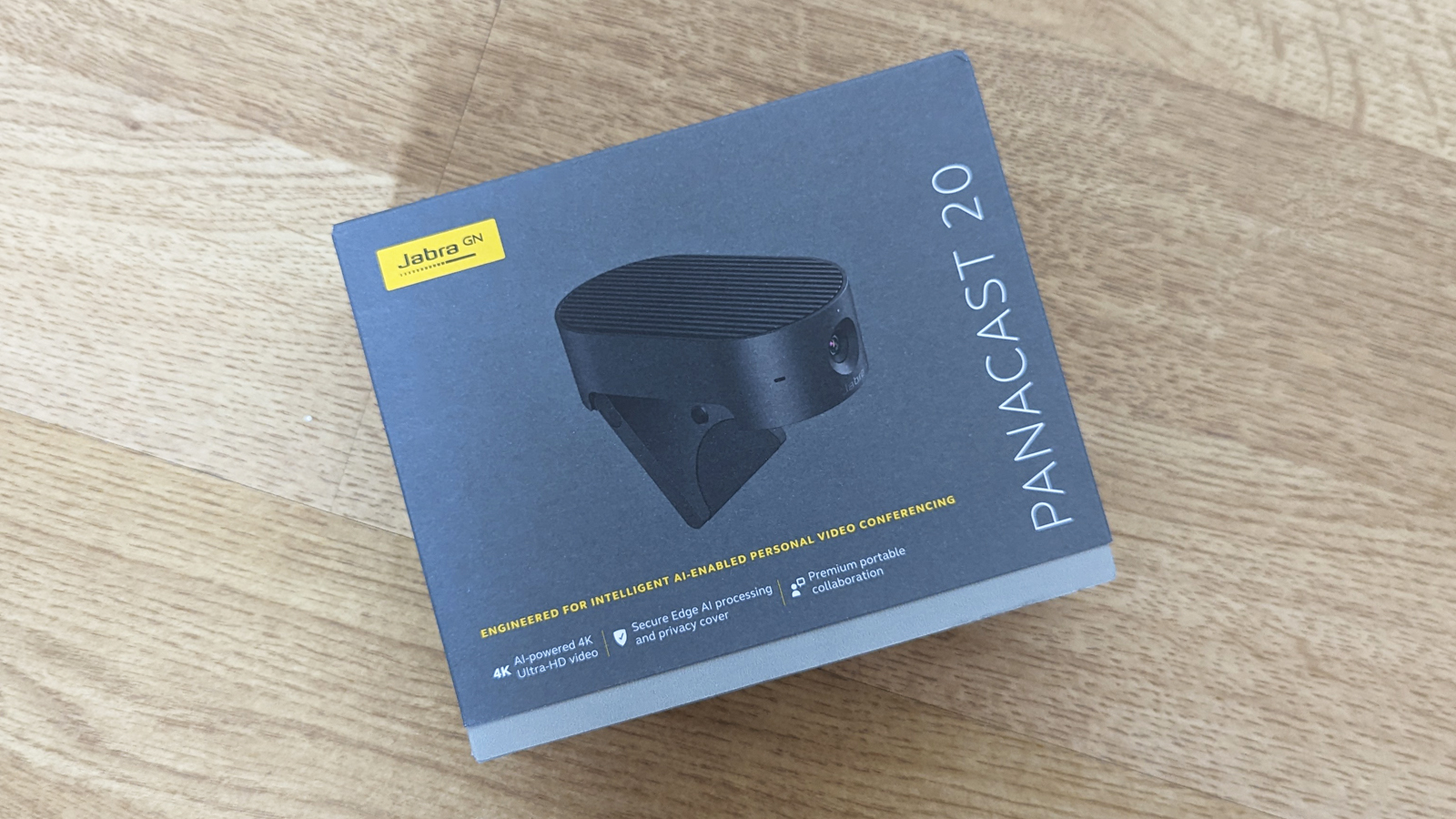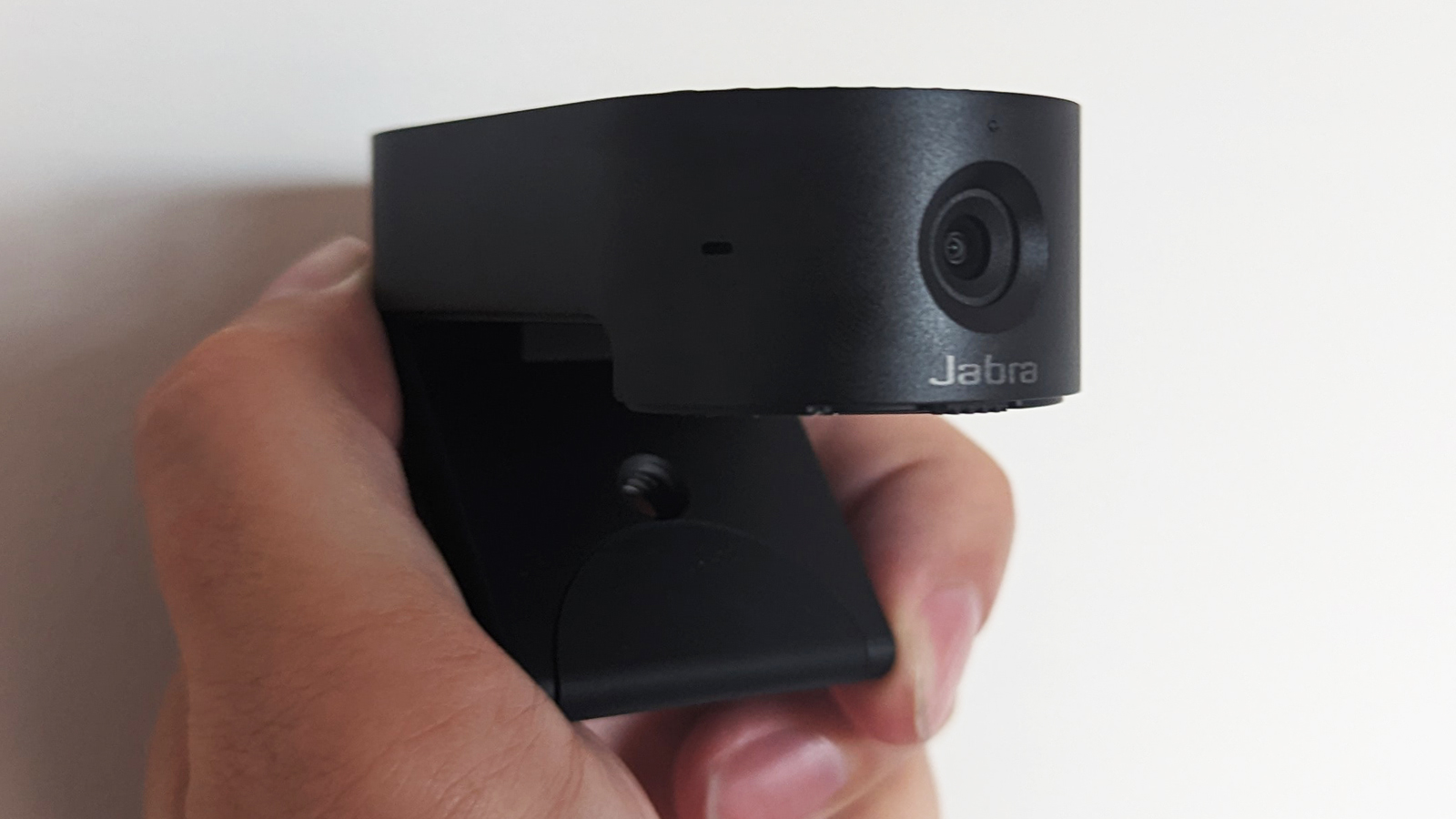Jabra PanaCast 20 review: a smart 4K webcam that's hard to beat
The Jabra PanaCast 20 is in the elite tier of webcams


The Jabra PanaCast 20 is undoubtedly one of the best webcams out there at the moment for Windows and macOS, with a 4K video feed and some clever integrated functions – but the question is whether or not you're prepared to pay this much for a new webcam.
-
+
Excellent video quality
-
+
Various smart features
-
+
Top build quality
-
-
No stand option
-
-
Will cost you
-
-
No USB-C adapter
Why you can trust T3

This Jabra PanaCast 20 review should help you decide if its one of the best webcams around right now – and more specifically, if it's the best webcam upgrade for your needs. It costs a considerable amount, but you do get plenty back in return for your money.
Many of us are now spending a lot more time on video calls than we used to, and while most laptops and plenty of monitors now come with a webcam included, you might consider buying a dedicated device to make sure you're always looking your best.
With a 4K resolution and AI-enhanced image processing, the Jabra PanaCast 20 has a strong claim to being one of the best video conference cameras around – and we'll cover everything from the setup process to the quality of the bundled software right here.
Jabra PanaCast 20 review: price and availability
The Jabra PanaCast 20 is out now, and available to buy in the UK from retailers including Amazon and Onedirect, as well as Jabra itself. Check the widgets embedded on this page, but at the time of writing, the webcam will set you back in the region of £250-£300. The webcam is also available in the US, where you can expect to pay around $300 for it.
Jabra PanaCast 20 review: design and setup

Even the Jabra PanaCast 20 packaging feels top quality: you know this is a premium-level bit of kit as soon as you open it up. As well as the webcam itself, in the box you get a sturdy black carry case, should you be planning on taking this on the road with you, and a USB-C to USB-A cable (the USB-A end goes in your computer, and there's no bundled adapter). At a generous 1.5 metres, the cable is long enough for you to be able to position the webcam just about anywhere you like.
At 136 grams, the webcam is a little heavier than you might expect, but it adds to that impression you get of this being a top-quality hardware device. The clip underneath the webcam is flexible enough to work with laptop lids and monitors of any sort of reasonable size, while the cable drops down the back. As soon as you connect up the cable to your computer the webcam is working and ready to go – and that includes the face tracking technology that keeps you in the centre of the shot.
It's not a particularly big webcam at 160 x 130 x 50mm, but it's not a particularly small one either: you're certainly going to be able to notice that it's there. A single white LED light lets you know when the webcam is active. There's also a physical privacy shutter button that you can slide across when you definitely don't want to be recorded (so you don't have to trust that the webcam isn't recording when it shouldn't be).
Get all the latest news, reviews, deals and buying guides on gorgeous tech, home and active products from the T3 experts
You need the free Jabra Direct software package to make the most of the device – unfortunately it's not all that easy to find on the Jabra website, but we got there in the end. It lets you access various features on the app (you can turn the face tracking on and off, for example), take manual control over the zoom and focus of the camera, and upgrade the webcam's firmware when needed too.
Jabra PanaCast 20 review: features and performance

As you would expect from a webcam with a 4K resolution, the picture produced by the Jabra PanaCast 20 is a very good one: the 13 megapixel camera produces video that's crystal clear and very sharp, and we can't fault it. The audio picked up by the three built-in microphones isn't quite as stellar, but it's still perfectly satisfactory, and we don't think anyone is going to have trouble seeing or hearing you on a video call.
There are a few clever tricks that the Jabra PanaCast 20 brings with it. The first is Intelligent Zoom, which zooms and pans automatically to keep your face in the shot (the camera itself doesn't move). This isn't particularly fast, and it isn't flawless (every now and again it gets a bit confused), but on the whole it's rather impressive. We wouldn't recommend moving around a lot on a video chat, but if you need to then this webcam can keep you in the shot. You can turn it off if you don't like it.
Then there's the intelligent lighting optimisation, which brightens up dull scenes through a bit of AI processing. This works really well and can sometimes save you in situations where the lighting isn't quite right. It's also worth mentioning the picture-in-picture mode, which lets you combine a zoomed out and a zoomed in picture – handy for presenting something you're holding in your hands, for example. These are all features you don't necessarily get in cheaper webcams.
When it comes to the Jabra Direct software, again it's well put together. The various functions are all easy to find and use, but at the same time the webcam works pretty well right out of the box – so if you don't want to be fiddling around with menus then you don't have to. It's possible to adjust settings such as brightness, contrast, saturation, sharpness and white balance manually too.
Jabra PanaCast 20: verdict

The story of the Jabra PanaCast 20 is pretty straightforward: it's a fantastic webcam that's going to cost you quite a bit of money. Only you can decide whether it's worth the outlay based on what your tech gadget budget is and how much time you're likely to be spending on video calls in the future – but we don't think you're going to be disappointed in terms of the build quality, performance or accompanying software.
Not everyone needs features like Intelligent Zoom of course, and maybe you're perfectly happy with a lower resolution webcam for the occasional chat with your colleagues and distant relatives. If that's your situation, then spending the same amount of money that could get you a pretty decent smartphone might well seem over the top, no matter how many extras get thrown in.
If we were being particularly picky then we'd say it would be nice to have a stand option. You can't really put the Jabra PanaCast 20 flat on a surface, because the USB cable slots in underneath, and sometimes it can be handy to be able to position a webcam away from your screen on a desk. That said, the Jabra is easy to clip to just about any screen, and isn't going to move around a lot or fall off.
As with a lot of product categories, from laptops to phones, some people want the very best there is, and money is no object. If that's your case then the Jabra PanaCast 20 is definitely in the top tier of cameras that fit the bill, with outstanding video resolution, lots of customisation options, and some smart features that actually work and can prove useful.
Also consider
Have a look at our best webcams list to see what else is out there at the moment. Take the Obsbot Tiny 4K, which matches the Jabra PanaCast 20 in terms of the 4K resolution, a smart tracking feature, and a high price. The Obsbot is a larger device, but it can be placed on a desk as well as on the top of a monitor or laptop lid, so it might be better suited for your own particular requirements.
You can always rely on Logitech webcams, and the Mevo Start is a brilliant choice if you're a content creator who needs to produce a lot of professional-looking video from your webcam. It can be used completely wirelessly if needed, giving you more freedom for your recording, but like the Obsbot and Jabra models you're going to have to do some saving up in order to be able to afford it.
Dave has over 20 years' experience in the tech journalism industry, covering hardware and software across mobile, computing, smart home, home entertainment, wearables, gaming and the web – you can find his writing online, in print, and even in the occasional scientific paper, across major tech titles like T3, TechRadar, Gizmodo and Wired. Outside of work, he enjoys long walks in the countryside, skiing down mountains, watching football matches (as long as his team is winning) and keeping up with the latest movies.
